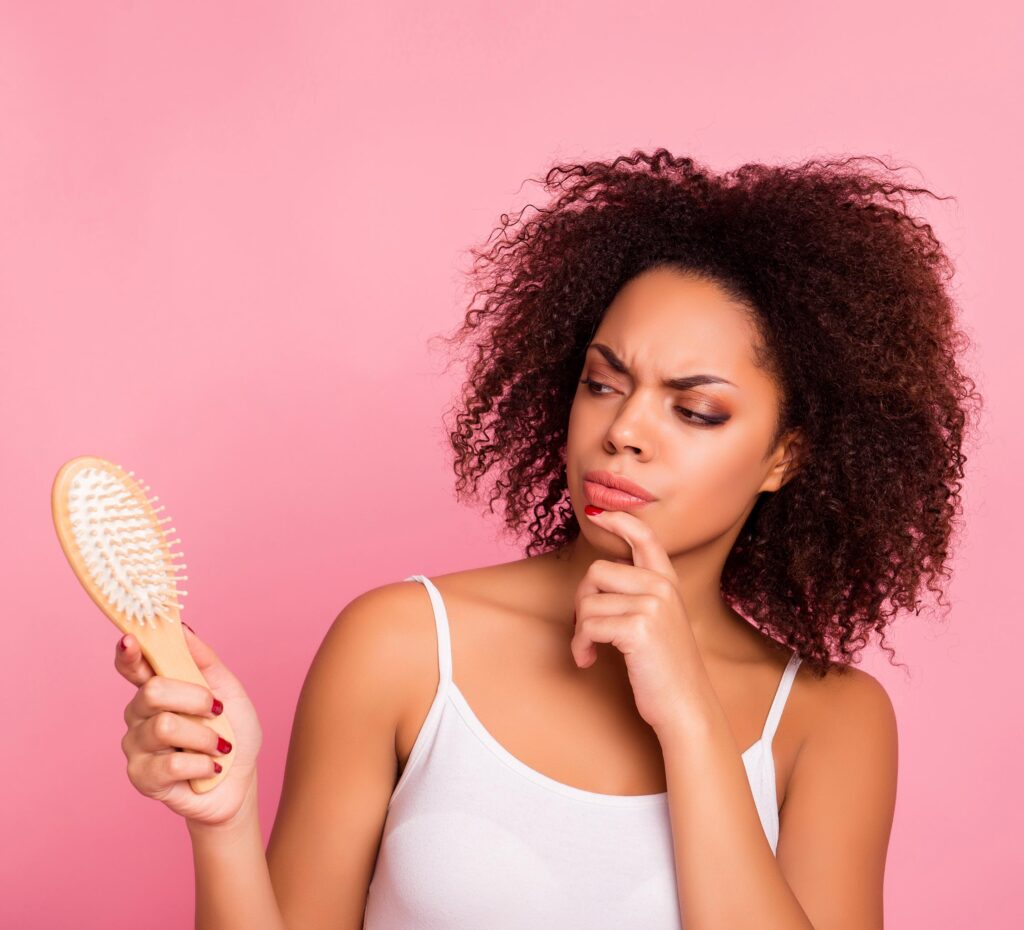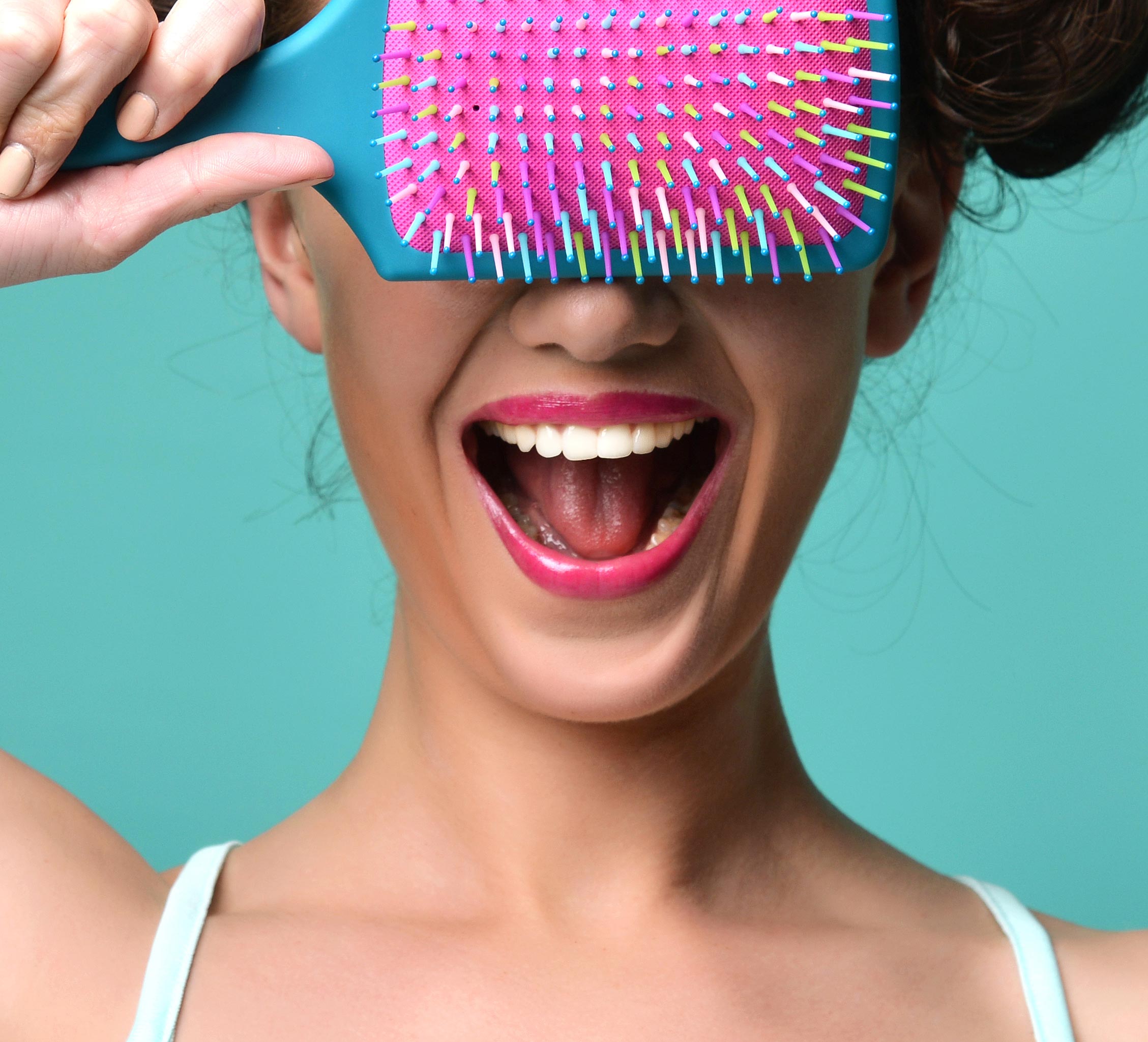
August is National Hair Loss Awareness Month. Are you one of the 56 million adults affected by it? Hair loss can happen at any age for a variety of reasons, and the condition can be frustrating on many levels. It’s no secret that thinning hair can be difficult to style…but are you accelerating hair loss if you’re also using hair color?
The short answer? No. Coloring your hair can cause protein loss in tiny amounts, which can make the hair appear thinner, especially if you go lighter than your natural hair color. However, it rarely causes hair loss because new hair growth happens below the scalp’s surface. The dyes and chemicals used in hair color don’t penetrate the scalp, harm the hair follicle, or damage hair that has not yet emerged.
So, while coloring your hair doesn’t affect new hair growth or cause it to get thinner, color-treated hair can get damaged if not treated with the proper care.
Here are a few things to keep in mind if you color your hair and are experiencing hair loss:
Choose Hair Color with Moisturizing Ingredients
Look for brands that contain natural humectants like Aloe Vera. Satin Hair Color features an Aloe Vera base that helps moisturize and condition the hair while soothing properties reduce scalp irritation and protect the cuticle. Avoid Parabens and Sulfates – which can be damaging to thinning hair and cause breakage.
Use Lower Volume Developer
10 and 20 volume developers are the gentlest options when it comes to maintaining the integrity of thinning hair. 10 volume won’t significantly lift your base color and is the least damaging to the hair while 20 volume can lift up to two levels while providing superior gray coverage.
Avoid Overly Dark Hues
Hair color that is dramatically darker than your natural shade will wash out your complexion and can make thin hair look even thinner. Overly dark, glossy shades are totally unforgiving and make your visible scalp the focal point.
Add Dimension
There are a ton of options to choose from that can make thin hair appear to have more volume and fullness. Balayage, babylights, or even a shadow root can trick the eye to create fuller looking hair. Just make sure the colors you choose blend well with your natural hair color because colors that are too close to your complexion (i.e. fair skin paired with bright or platinum blonde) provide no depth, leaving your hair looking dull and flat.
Highlights & Lowlights
Avoid a high-contrast color between your hair and your scalp by adding in some lighter, natural-looking highlights for blending. The highlights help break up your base color, making it look lighter. Similar to highlights, lowlights can add dimension and depth to the hair but with darker shades, making it appear thicker, especially for people with lighter-colored hair.

